Challenges to Homeownership

In our previous post on Transit-Oriented Development (TOD), we discussed its growing acceptance and cited specific examples of these types of real estate projects in several areas in which The True Life Companies (TTLC) is actively engaged. Those areas included the greater San Francisco Bay Area, Silicon Valley and Sacramento, but the idea is quickly spreading nationwide.
As mentioned before, TOD usually includes a mix of commercial, residential, office and entertainment uses centered around or located near a transit station. Consumers seem to like it, with a 2016 survey showing that 73 percent of Americans would support changing land use or zoning to encourage more transit-oriented development. TOD can even help improve local economies by allowing both residents and employees to spend more time and money at restaurants, shops, and entertainment activities versus the time and expense of commuting by car.
TOD can also help address the housing crunch seen in the country’s more dynamic cities. A 2016 report by consulting giant McKinsey & Co. found that by providing density incentives within a half-mile of transit stations, cities and towns in California alone could help developers build 1.2 million to 3 more million housing units.
Following are some summaries and recent examples of what Denver, Colorado, Orange County, and Los Angeles are doing to encourage the growth of TOD.
![TheTrueLifeCompanies-DenverFall2018-22[1]1.jpg](https://thetruelifecompanies.imgix.net/blog/TheTrueLifeCompanies%2DDenverFall2018%2D22%5B1%5D1%2Ejpg?fit=crop&w=400&auto=format&q=70&dpr=2
)
Denver:
In 2004, voters approved a massive, $5 billion public transportation expansion plan to include 122 miles of new commuter and light rail lines, 18 miles of express bus service, and 57 new transit stations throughout the Denver metro area. According to a 2018 report by the City of Denver, since the start of FasTracks, 40,739 residential units, 1.4 million square feet of retail, 3,659 hotel rooms, and 9.4 million square feet of office space have been added at TOD sites throughout the region. Throughout 2019 and 2020, approximately 8,000 residential units, 500,000 square feet of retail space and 1.5 million square feet of office space are estimated to be added to the existing marketplace in TOD-designed districts.
Example: The central hub of Denver, known as Union Station, has seen 17 projects completed, with 3,000 residential units, 2 million square feet of office, 375,000 square feet of retail, and 725 hotel rooms. Just 6 stops north of Union Station in downtown Denver, a new TTLC property near the Eastlake rail station has been slated for a mix of apartments and townhomes. Part of The Eastlake At 124th Station Area Master Plan in Thornton, CO, this new location is directly across from RTD FasTracks North Metro Rail Line (N Line) and located nearby new commercial and retail space.
Between 2005 and 2018, development around transit stations operated by the Denver Regional Transit District (RTD) -- but not including downtown Denver, Union Station or the neighboring City of Boulder -- has included 904 office properties worth $2.3 billion and totaling 6.9 million square feet of space, and 520 multi-family properties worth $3.7 billion and including nearly 13,800 units. In addition, RTD’s $500 million investment at Union Station was instrumental in catalyzing $3.5 billion in new development.
Orange County:
In California’s Orange County, the area’s focus on widening freeways to accommodate more cars versus expanding public transit means that it will likely be a follower more than a leader for transit-oriented developments. According to consumer surveys conducted by Chapman University in 2018 and 2019, public opposition to transit-oriented development, especially in the county’s densest neighborhoods, suggests serious feasibility issues. However, as car traffic continues to worsen, it’s likely that transit-oriented developments will be approved along rail corridors such as those offered by MetroLink.
Example: In the center of the county, the Line at Santa Ana is a 228-unit, mixed-use apartment community currently under construction. Directly adjacent to a future light rail stop, the community also includes 4,000 square feet of retail and public space on a total of 3.9 acres. Offering easy access to interstates 5 and 405, the project is part of the Harbor Mixed Use Corridor Specific Plan, an initiative that aims to increase public transit and walkability along the Harbor Boulevard Corridor in the City of Santa Ana.
Los Angeles:
According to the McKinsey study noted previously, one-third of those housing units within a half-mile of transit stations, or a little more than 900,000, would be located in Los Angeles.
During 2016, Los Angeles voters passed Measure JJJ, which requires housing developers in the city to either add affordable housing or pay a fee. As part of this, the Transit Oriented Communities Affordable Housing Incentive Program gives developers who are planning projects within a half-mile of a major transit stop certain benefits for adding affordable or mixed-income housing to their projects.
In the TOC program’s first full year in 2018, 30% of the proposed housing units in the city — 8,184 out of 27,366 units — were filed under the Transit Oriented Communities program.
Example: Gensler is partnering with the MTA to redevelop a 15-acre site adjacent site in North Hollywood where the end of a subway line meets a dedicated bus lane. The project will include approximately two million square feet of housing, office, and retail space. The plan includes a 25% affordable housing goal, new transportation infrastructure, and significant open space.
 © Copyright 2024, The True Life Companies. All Rights Reserved. Website Design by Kovach Marketing. Development & Hosting by Blue Tangerine.
© Copyright 2024, The True Life Companies. All Rights Reserved. Website Design by Kovach Marketing. Development & Hosting by Blue Tangerine.